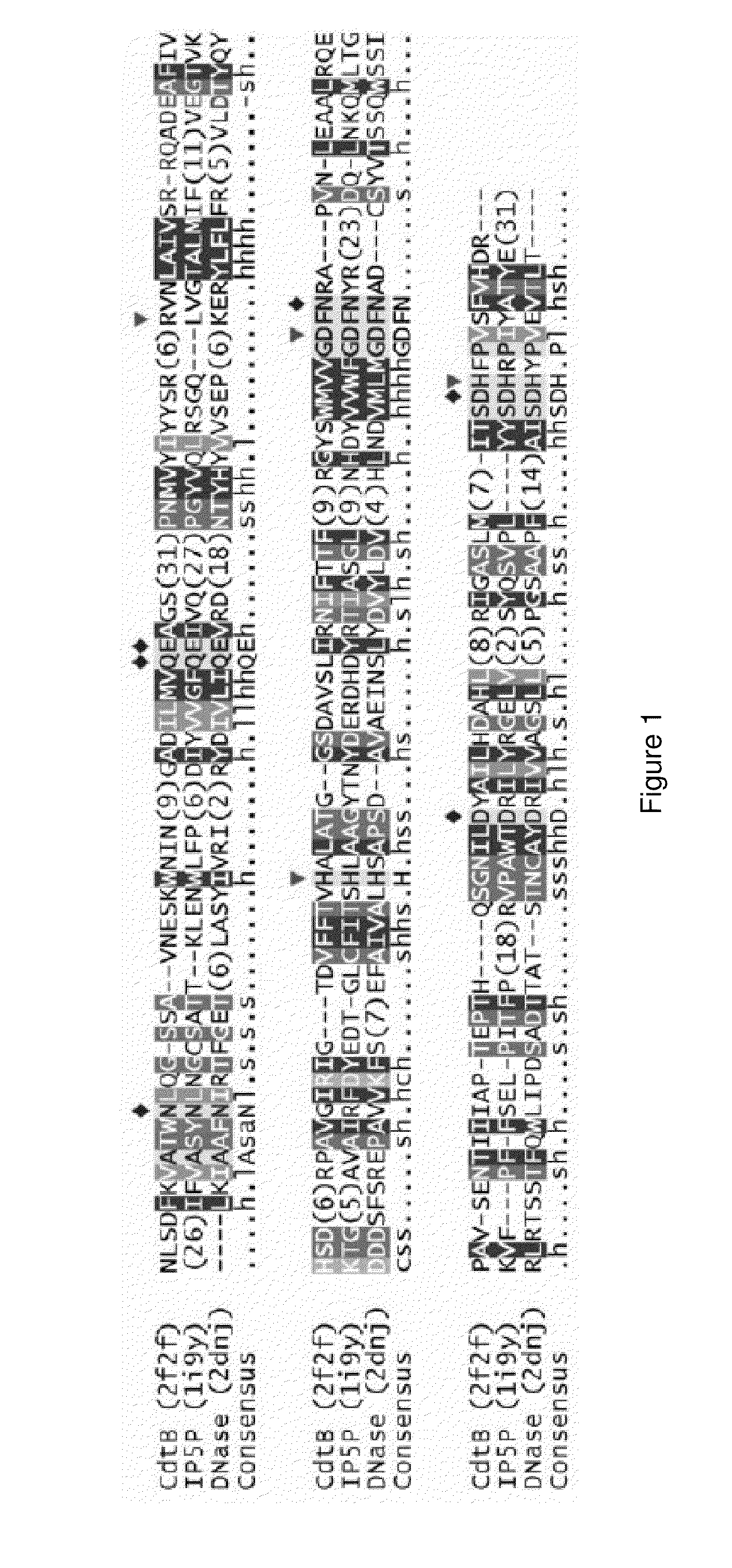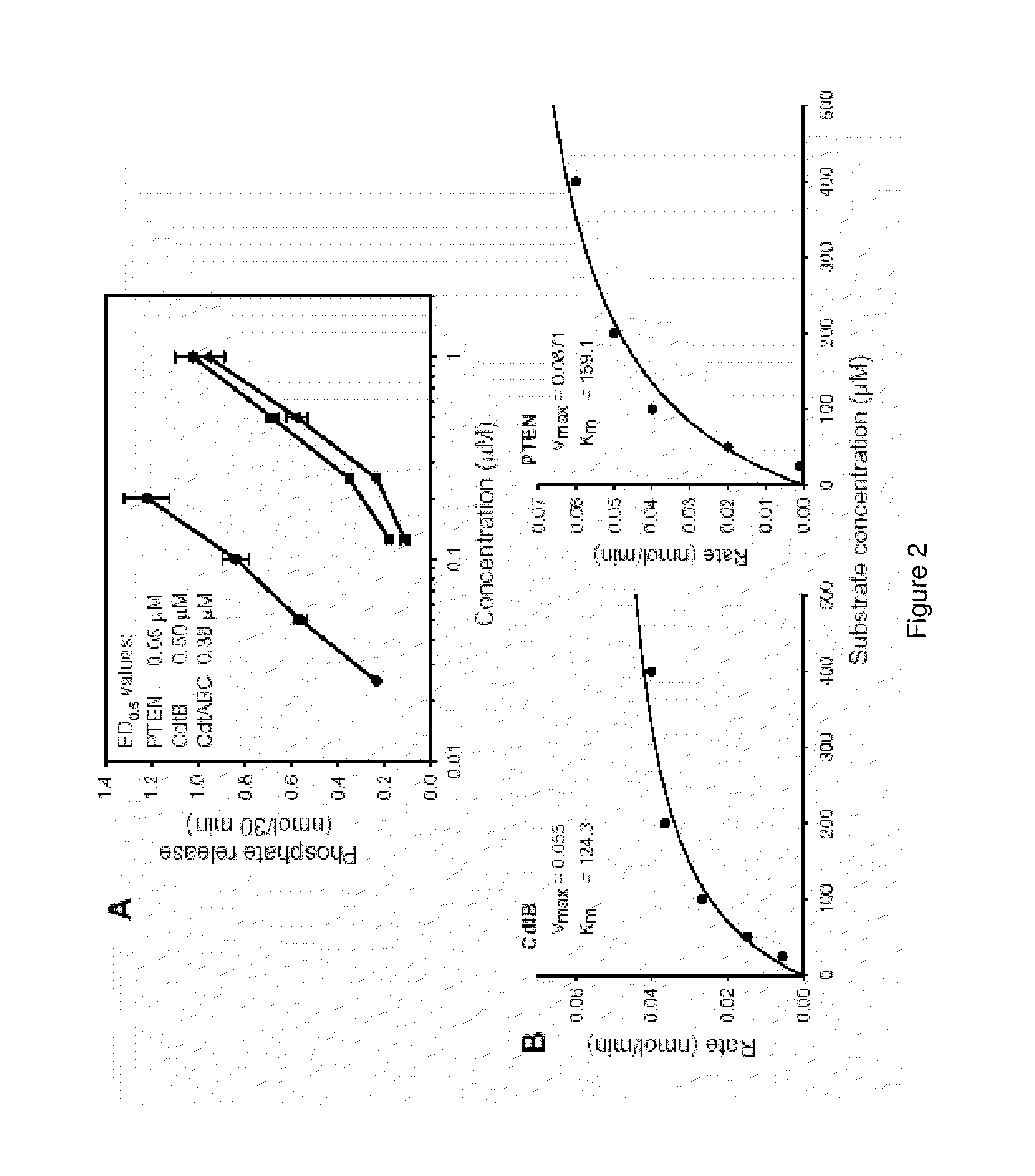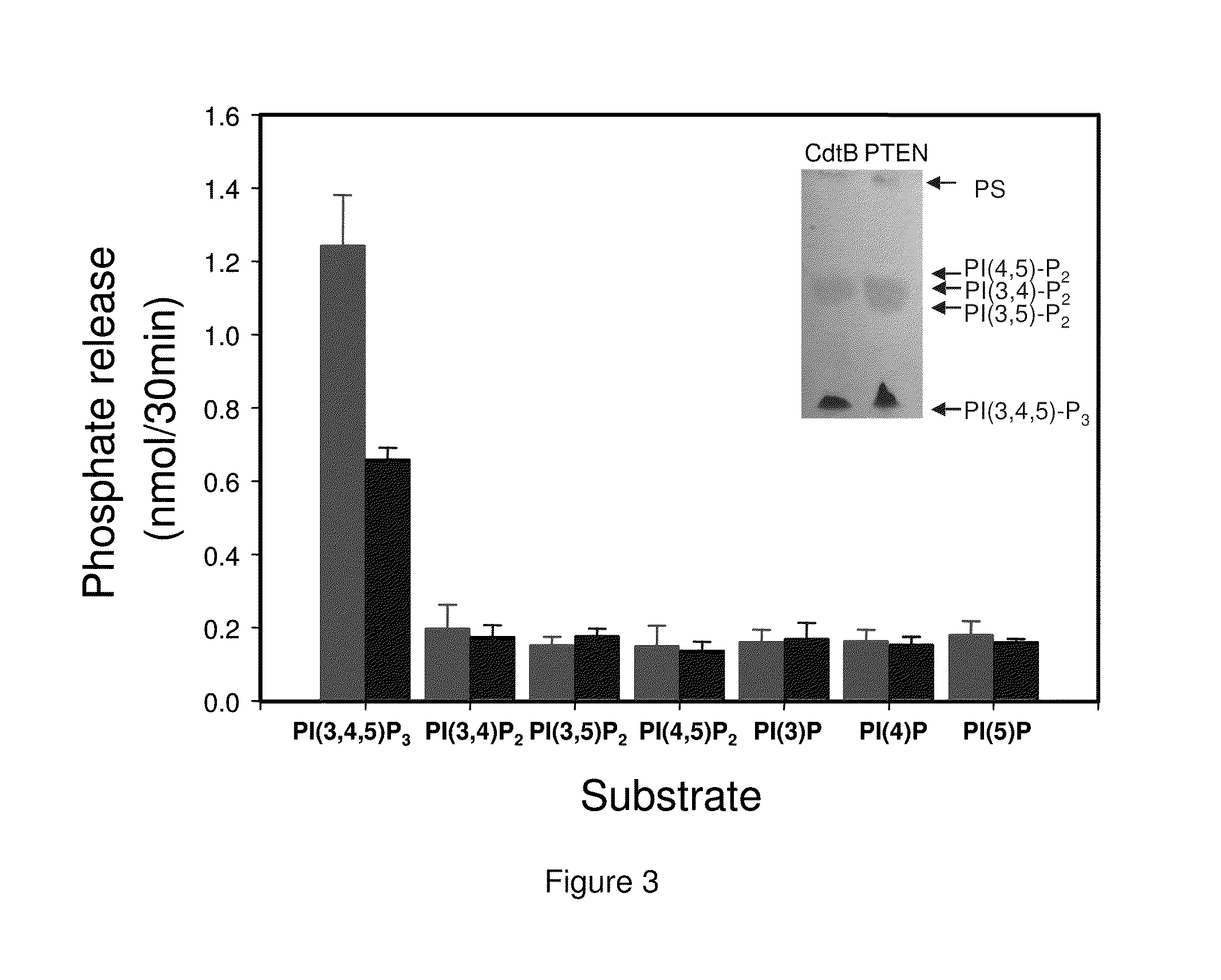Cytolethal distending toxin and use thereof
a cytolethal distending and toxin technology, applied in the field of immunotoxins, can solve the problems that the mechanism of action does not account for the huge difference in the sensitivity of lymphocytes to the toxin, and achieves the effect of inhibiting the activity of cdtb
- Summary
- Abstract
- Description
- Claims
- Application Information
AI Technical Summary
Benefits of technology
Problems solved by technology
Method used
Image
Examples
example 1
CdtB Shares Catalytic Residues and Similar Reaction Mechanism with the Large Group of Functionally Diverse Mg2+-Dependent Phosphoesterases
[0209]It has been proposed, based on sequence comparisons, that CdtB shares catalytic residues and similar reaction mechanism with the large group of functionally diverse Mg2+-dependent phosphoesterases. DNase I was the first structurally characterized member of this diverse enzyme superfamily as well as subsequent structural characterization of inositol polyphosphate 5-phosphatases and CdtB, which confirmed the initial prediction. An alignment of these three structures shows striking conservation of catalytic and divalent ion-chelating residues, despite low overall sequence identity (FIG. 1). As a general rule, all enzymes in this superfamily hydrolyze phosphate esters and their exact function depends on what substrate(s) can be accommodated in the active site. CdtB was originally characterized as a DNase-like enzyme and the putative phosphatidyl...
example 2
CdtB Exhibits Phosphatase Activity
[0210]CdtB was initially assessed for its ability to dephosphorylate PI-3,4,5-P3. As shown in FIG. 2A, CdtB exhibits dose-dependent (0.2-1.0 μM) phosphate release which ranged from 0.1 to 0.9 nmol in the presence of 0.2 and 1.0 μM CdtB, respectively. It should be noted that CdtA and CdtC failed to exhibit phosphatase activity under identical conditions (data not shown). The Cdt holotoxin (CdtABC), containing all three subunits, exhibited dose-dependent activity similar to that of CdtB. ED0.5 values [concentration required to catalyze 0.5 nmol phosphate release] were calculated; the ED0.5 for CdtB and the holotoxin were 0.5 μM and 0.38 μM, respectively. For comparative purposes, PTEN was also assessed for activity. PTEN exhibited dose-dependent (0.02-0.2 μM) phosphate release; thus PTEN was determined to be approximately ten times more active then CdtB with an ED0.5 of 0.05 μM. To further explore the propensity of CdtB to act as a phosphatidylinosito...
example 3
Lipid Moiety is Critical for CdtB Phosphatase Activity with PI-3,4,5-P3 as the Substrate
[0211]CdtB substrate specificity was assessed using several different phosphoinositides (PI). Experiments indicated that the lipid moiety was critical for CdtB phosphatase activity when PI-3,4,5-P3 was used as a substrate; therefore, all PIs contained di-C1-6 acyl side chains were tested. The PIs were incorporated into a lipid bilayer with phosphatidylserine as the carrier lipid. As shown in FIG. 3, CdtB-catalyzed phosphate release only occurred in the presence of PI-3,4,5-P3; neither phosphatidylinositol diphosphates or monophosphates were able to serve as a substrate. PTEN exhibited substrate specificity for PI-(3,4,5)-P3 identical to CdtB. In other experiments, it was also determined that CdtB was unable to dephosphorylate inositol triphosphate or inositol tetrakisphosphate. It should also be noted that CdtB did not exhibit detectable protein phosphatase activity when the synthetic substrate, ...
PUM
| Property | Measurement | Unit |
|---|---|---|
| molecular weights | aaaaa | aaaaa |
| molecular weight | aaaaa | aaaaa |
| pH | aaaaa | aaaaa |
Abstract
Description
Claims
Application Information
 Login to View More
Login to View More - R&D
- Intellectual Property
- Life Sciences
- Materials
- Tech Scout
- Unparalleled Data Quality
- Higher Quality Content
- 60% Fewer Hallucinations
Browse by: Latest US Patents, China's latest patents, Technical Efficacy Thesaurus, Application Domain, Technology Topic, Popular Technical Reports.
© 2025 PatSnap. All rights reserved.Legal|Privacy policy|Modern Slavery Act Transparency Statement|Sitemap|About US| Contact US: help@patsnap.com



